#cryptobiosis
Text
Wet Beast Wednesday: tardigrades
Last week on Wet Beast Wednesday I covered the largest animals to ever exist on our planet. This week I'm going to pull a full 180 and cover the smallest animals yet on this series. Meet the tardigrade, the internet's favorite micro-animal the is said to be basically immortal. How true is that? Let's see.

(Image: an electron microscope image of a tardigrade. It looks a lot like a potato with eight stubby legs tipped with long claws. At the front is a small, circular mouth. It has no other discernable features. In the background are bits of plant matter that look like seaweed at this scale. End ID)
The tardigrades are 1,300 known species (and probably a lot of unknown ones too) in the phylum Tardigrada. They are also part of the superphylum Ecdysozoa, which are animals that grow by molting their outer cuticles or exoskeletons. In particular, the tardigrades are believed to be a sister group of the arthropods, the group that contains crustaceans, insects, isopods, and a lot of other things. Tardigrades are truly tiny, the largest species reaching a whopping 1.5 millimeters in length, though most species reach no more than 0.5 mm. They have round, segmented bodies with four pairs of legs that end in either claws or suction discs. The body segments consist of a head, three body segments with a pair of legs each, and a caudal segment with the final pair of legs. The first three legs are used for movement while the final pair points backwards and is used for grabbing onto substrate. All of the body segments except for the final one correspond to segments found in the head section of insects. Tardigrades are missing many hox genes, genes that direct the body plan during development. Their ancestors may have had a body plan more similar to insects, but the loss of the hox genes has compressed them into walking heads with a bit of butt. The mouth is tubular and sucks in food. In the mouth are stylets, needle-like structures used to pierce food objects. Once food is drawn into the mouth, a structure called the buccopharyngeal apparatus activates. This is a combination of spines and muscle that acts like an inner jaw that pulls food into the digestive tract. The buccopharyngeal apparatus is distinct enough to be used as a major identifying feature between species. Tardigrades are translucent and many images you've seen of them have false color to show the details or are 3D models based on scanning electron microscope imagery of them. Tardigrades molt their exoskeletons multiple times (up to 12) during their lifecycle. Some species are unable to poop normally and instead all their waste is discarded during the molt. It was formerly believed that tardigrades could exchange genes with each other without mating, a process called horizontal gene transfer that is seen in bacteria, archaea, and other micro-organisms. It has since been discovered that while still capable of horizontal gene transfer, it is quite a bit rarer in tardigrades than we thought.
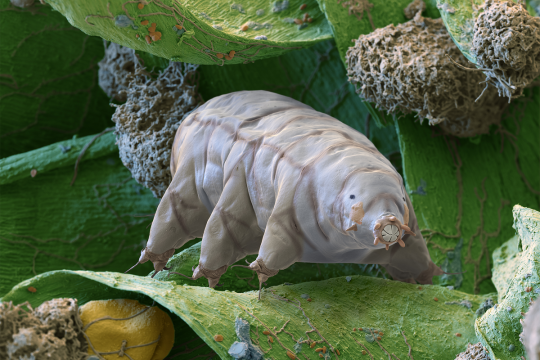
(Image: an electron microscope image of a tardigrade standing on a bit of plant matter. This one has a closed mouth with a ring of triangular tooth-like structures. It also has two simple eyes that look like black dots. End ID)
The name "tardigrade" means "slow walker", which is fitting as, despite their eight legs, tardigrades have a slow and awkward gait. This is the result of their legs being unjointed, only able to pivot at their connection to the body. Their gait has been compared to that of bears, hence why they are often called water bears and their discoverer, Johann August Ephraim Goeze, called them "kleiner wasserbär", meaning "little water bear". Tardigrades are found worldwide and have inhabited virtually every habitat, from the tops of mountains to the deep sea, from hot springs to the antarctic, from freshwater to saltwater. The one thing they have in common is a need to stay wet. Tardigrades can survive out of water as long as they can stay moist and are often found in mosses, hence another common name: moss piglets. The majority either eat plants or bacteria, but some will feed on smaller tardigrades or other micro-animals. Their famous survivability makes it easy for tardigrades or their eggs to be carried to new habitats by larger animals or other phenomena. Tardigrades are one of the first micro-animals to colonize a new habitat and they are a pioneer species, the first species to colonize a new environment and whose presence makes that environment fore suitable for other species to follow. Tardigrades are a major food source to other micro-animals and larger organisms. Most species have distinct males and females, though a few reproduce through parthenogenesis. In most cases, molting female will lay her eggs in her shed cuticle and males will them fertilize them. Other species have a form of internal reproduction. Males and females will court each other before mating and females will usually allow multiple males to fertilize her eggs. Female tardigrades are typically larger and more abundant than males. Eggs can take up to 14 days (species dependent) before hatching. All tardigrades of the same species have the exact same number of cells as each other. They are also born with the same number of cells they will have as an adult. Their growth is driven by enlargement of the existing cells rather than cellular reproduction making new cells. The lifespan ranges between a few months to a few years, depending on species.

(Image: a color photo of a tardigrade. It is a pale, translucent white, making it hard to make out details. Its body is curved, with the front end pointing at the camera. It has two simple eyes. End ID)
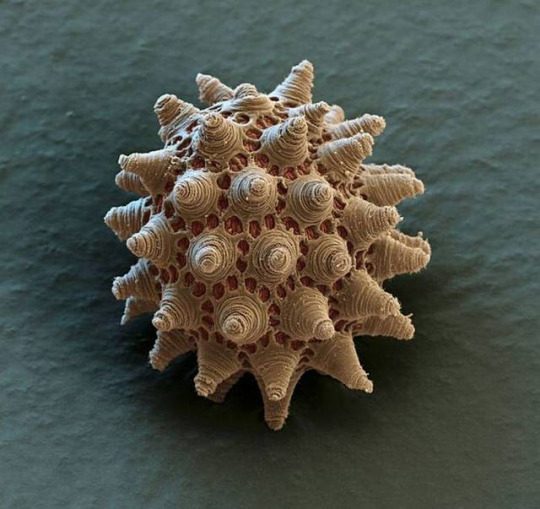
(Image: an electron microscope image of a tardigrade egg. It is round but covered in small pores and conical structures. End ID)
The most famous feature of tardigrades is their legendary durability. It is commonly said that tardigrades can survive just about anything (except for the things that are actually trying to kill them. They are prey to a lot of species after all). Among the things they can survive is extreme heat, extreme cold, dehydration, extremely high and low pressure, exposure to ionizing radiation (that's the scary kind), low oxygen environments, environmental toxins, heavy impacts, and the vacuum of fucking space. While the can survive in extreme conditions, tardigrades are not considered extremophiles. True extremophiles thrive in extreme environments and are negatively impacted by leaving them. Tardigrades can survive in extreme environments, but are negatively impacted and can't survive as well there as they can in less extreme places. The main trait that has allowed tardigrades to survive all five mass extinctions in history is cryptobiosis. Cryptobiosis is the rare ability for an animal to enter a state of dormancy where their metabolic processes come to an almost complete stop. While in cryptobiosis, metabolic activity drops to 0.01% normal and water content drops to 1% normal. In this state, the tardigrade is called a tun. Tardigrades usually enter cryptobiosis in response to arid conditions. One experiment showed that a species of tardigrade could last for at least 30 years in this state and return to normal lifestyle functions when exposed to water. Tardigrades will also enter cryptobiosis in response to low oxygen, toxic chemical exposure, increased or decreased temperature, and excessive salt content in the water. Tardigrades also show extreme resistance to both high and low pressure. They can live in 0 atmospheres of pressure and some species can survive up to 6,000 atmospheres, more than double the pressure at the bottom of the Marianas trench. More interesting is their ability to survive dangerous radiation. They can survive 1,000 times the dose of gamma radiation that humans can. Early tests focused on tardigrades in cryptobiosis and concluded that the extremely low water content of a cryptobiotic tardigrade doesn't leave much opportunity for the radiation to react with the animal. However it was later found that active and fully hydrated tardigrades are still considerably resistant to radiation. Studies into this resistance indicate that tardigrades can very efficiently repair damaged DNA and have unique proteins called Dsup that provides additional protection. Dsup introduced to human cells has provided additional protection against x-rays.
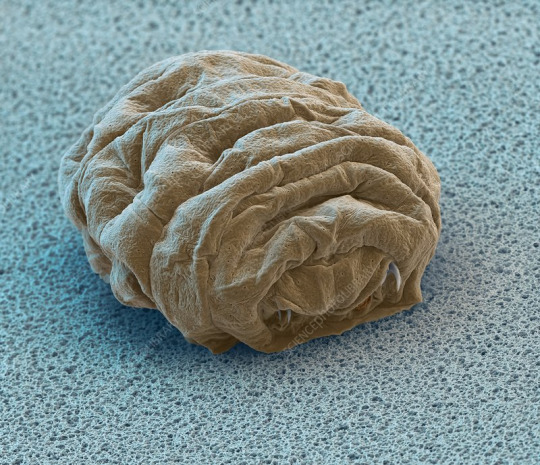
(Image: an electron microscope image of a tun - a tardigrade in cryptobiosis. It is smaller and very wrinkly, with the legs and mouth retracted into the body. End ID)
Tardigrades were the first animals to be exposed to the vacuum of space. They were exposed for 10 days, some in a state of cryptobiosis at the time of exposure and some still active. It was found that they were able to survive the vacuum when shielded from the sun's ultraviolet radiation, with those already in cryptobiosis doing better. Upon being rehydrated, many were able to resume normal life functions and successfully reproduce, though others died after being rehydrated. Those that were exposed to UV radiation fared much worse, with only a few hydrated individuals surviving. The individuals in cryptobiosis had a lower survival rate when exposed to UV than those not exposed to UV and were less successful at reproducing afterwards. Studies of tardigrade's space survival abilities and resistance to radiation could go a long way in helping human space travel. One of the largest dangers of space travel is that space is full of nasty radiation from the sun that Earth's magnetic field protects us from. Some scientists speculate about the possibility of accidentally seeding other planets or moons with tardigrades or other space-resistant organisms. This is a problem because introducing Earth life to other world has the potential to damage any native ecosystems and if we find life in space in the future we don't want to have to figure out if it's something we accidentally put there. While tardigrades could likely survive on other planets, they would eventually die without a food source. Some sources reported that tardigrades may have colonized the moon after an experiment with them crashed. Unfortunately, the moon is not crawling with tardigrades now. It's way too dry for them to exit cryptobiosis even if they survived the crash, which they probably didn't.
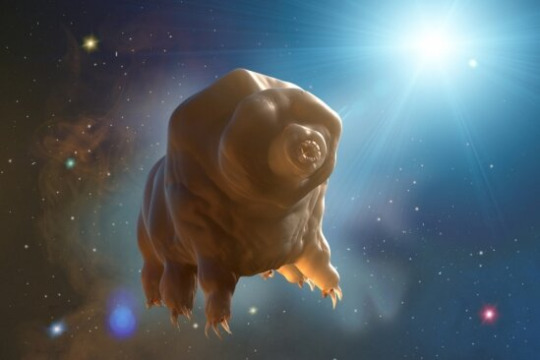
(Image: art of a tardigrade floating in the vacuum of space. End ID. Source: University of California - Santa Barbara)
#wet beast wednesday#tardigrade#water bear#moss piglet#micro animal#microbiology#marine biology#biology#zoology#ecology#animal facts#informative#science#space#astrobiology#radiation#cryptobiosis#tun#image described
162 notes
·
View notes
Text
Cryptobiosis - Humanity's hope in climate crisis, space travel?
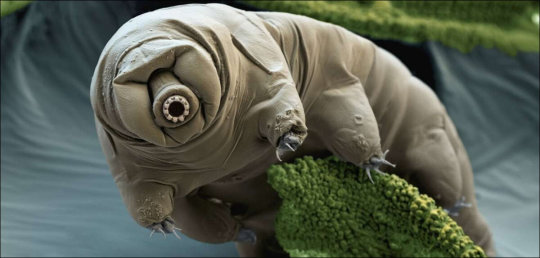
A recent paper on a roundworm that survived 46,000 years frozen in ice, has renewed interest in the field of cryptobiosis that has the potential to change the galaxy writes Satyen K. Bordoloi.
Read More. https://www.sify.com/science-tech/cryptobiosis-humanitys-hope-in-climate-crisis-space-travel/
0 notes
Text
can i just go into cryptobiosis for an undetermined period of time please
0 notes
Text
Tired of gender? Try becoming a tardigrade today!

·They can't die from hypothermia!
·They survive without food or water!
·Actually, they're almost immortal
·And they can even survive without oxygen.
·Can the terfs do that? I don't think so.
·Also they're cute and everyone loves them. Especially people who study quantum physics.
See, being a tardigrade is the coolest shit ever. So why are you still hesitating to reject your mortal flesh?
#Tardigrades#They're just amazing little things from the unknown side of the world#Also they can make quantum connections in cryptobiosis#Biophysics facts#Don't mind me I just post stupid stuff at 3 am
7 notes
·
View notes
Text
Aliens are floored by tardigrades
Life is pretty resilient. It has to be, especially if the rest of the Galaxy thinks we're from a Deathworld. In comparison then, if their planets are not as demanding, would life there ever be under enough pressure to survive to go to the extreme lengths that some Earth creatures do? I think one of the most profound things aliens might learn from Earth and Humanity is just how powerful life itself can be.
That itself could shake their understanding of themselves - a billion year old civilization could never even conceive of a thing we accept as simple fact, ushering a revolution in thinking not seen in eons.
___________________________
The Galactic Coalition scientists are busying themselves with obtaining, analyzing, categorizing, and integrating the libraries of information Humanity has brought with them as they incorporate into the greater space faring matrix of civilizations.
A good grasp of Physics, though lacking in certain fields for now; unmatched Engineering doctrines, they really do think of everything, although, perhaps, better to say - they really do attempt everything, then take notes and improve for the next attempt.
Chemistry is another fine addition to the collective knowledge base, a disproportionate part of the catalogue is comprised entirely of explosive reagents and combinations - always good to know more about what NOT to do.
And Biology. Oh boy. What a chaotic but beautiful but also disturbing mess. Life on most planets has a long period of just chugging along, surviving as best it can, until eventually something has the bright idea to evolve the ability to have bright ideas. Then in almost no time at all (on a cosmic scale) a dominant intelligence emerges and civilization alongside it, and in the blink of an eye it finds itself exploring the stars.
A similar pattern happened on Earth, but interrupted alarmingly often by utter catastrophes. Humans call them Mass Extinctions. It is exceedingly rare to find life that can talk about its own extinction events. Kind of deflates the term a bit. Life on planets as inhospitable (by Galactic norms) as Earth tends to be found only as fossils, and almost always on the microscopic level - very rarely do they get the chance to form more complex and advanced lifeforms before the planet with its harsh conditions and scarce resources kills it just as randomly as it spawned it.
We were incredibly saddened to learn from the Humans that the biodiversity of Earth had dwindled by roughly 85% since they accidentally created that giant hole on their planet, and that it had already been on a steady decline before then. Even so, when they revealed there were still 2.4 million species alive on Earth was a shockingly high number. Most are on the brink of extinction, yes, but the fact remains that Earth is easily one of the most biodiverse planets in the Galaxy.
Then we started looking at each individual species and learned about the Tardigrade.
what
It is literally the toughest creature ever discovered, and it's not even close. At least, so far, we haven't looked at absolutely everything Earth has or had yet.
It can just... basically turn itself off and then back on again when the outside becomes livable again - Cryptobiosis, or suspending their metabolism, something we considered only possible through artificial means. And the levels of various extreme they can endure and still be alive would just be utterly ridiculous if they didn't give us samples to confirm for ourselves.
Then we came across the term Extremophile and just decided to take a day off.
#earth is weird#earth is space australia#earth is a deathworld#nature is weird#tardigrade#that's how my brain works#I too learned of that term only now#so it was time to stop before things got out of hand#carionto
393 notes
·
View notes
Text
Phylum #14: Tardigrada, the water bears!
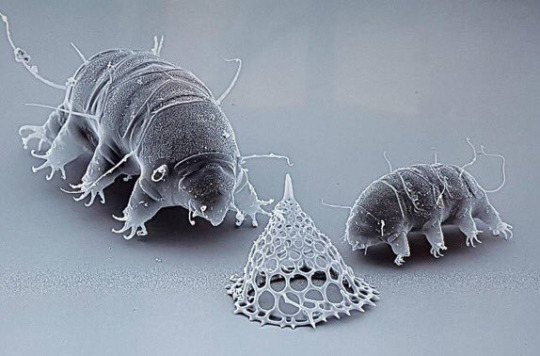
With humans, the only creatures to have reached the Moon alive are small, inconspicuous eight-legged creatures. But they are not spiders, or arthropods for that matter. While still their ancient relatives, tardigrades have followed a very different evolutionary path.
Tardigrades are part of our third and last ecdysozoan group, panarthropods - with a segmented body bearing multiple pairs of limbs. However, most of the tardigrade body isn't homologous to the arthropod one! Instead, most of their limbs correspond to what would become antennas and mouthparts in arthropods, functionally making them a giant head with two back limbs!
Most famous for surviving extreme conditions, from near-absolute zero temperatures to immense pressures or the vacuum of space, tardigrades achieve this thanks to a special capability called cryptobiosis. By entering a dehydrated "tun state", they preserve themselves while nearly stopping their metabolism, and can be revived decades later in perfect health! While they survived on the surface of the Moon, they do not thrive in those extreme conditions, only being dormant - in fact, they prefer moist environments like mosses or hot springs!
Fancy a mystery? Tardigrades today are divided into two main classes - the plump Eutardigrada and the armored Heterotardigrada. However, a third class, Mesotardigrada, was discovered in 1937, with a single specimen found in a hot spring near Mount Unzen, Japan. Of unique appearance among tardigrades, it was never found again despite repeated searches, and the type locality was destroyed years later.
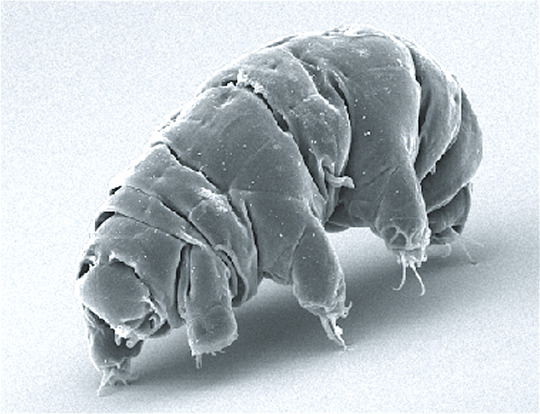

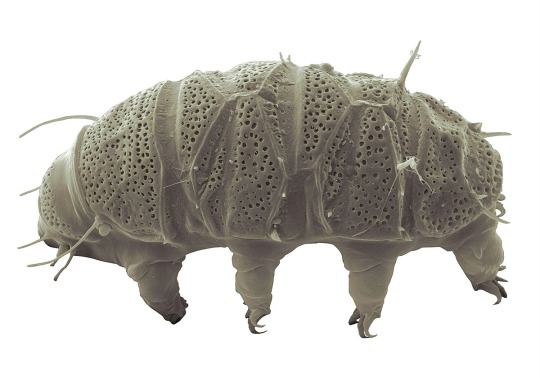

61 notes
·
View notes
Photo










Green River Overlook, Canyonlands National Park (No. 3)
Drought Tolerators
Drought tolerators are able to withstand losing much of their total body water content, in some cases up to 92 percent (e.g. rotifers, tadpole and fairy shrimp eggs). This process is known as cryptobiosis. Remarkably, many cryptobiotic species can be rehydrated and become fully functional in as little as half an hour. Cryptobiosis is accomplished by a command center in the organism that remains hydrated. Throughout the rest of the organism, water is replaced by sugar molecules. Changing water to sugar helps the organism’s cells keep shape. Many species are only tolerant during one stage in their life cycle (e.g. egg, larva) and will die if a pool dries up during another life cycle stage.
Source
#Willow Flat#Green River Overlook#desert#landscape#red rock#geology#rock formation#Island in the Sky#flora#nature#Canyonlands National Park#White Rim Sandstone#bush#grass#original photography#summer 2022#view#La Sal Mountains#Utah#Western USA#USA#vacation#travel#rocks#cliff#mesa#butte#dead wood#Colorado Plateau
43 notes
·
View notes
Text
I have decided to ride out the rest of this heat wave by entering cryptobiosis. Now if you'll excuse me i have to go eject all the water from my body and incase myself in a cyst
106 notes
·
View notes
Note
Tell me about the ancient worm lore drop
OKAY HON HERE'S THE LORE
46,000 year old nematode (or roundworms (so the kind that are like parasites)) have been revived by scientists
new species!
they were discovered in the siberian permafrost in suspended animation
2 of the worms were discovered in 2018 in a fossilised squirrel burrow about 40 meters below the ice
so basically they existed in a state of cryptobiosis which is like. mega super worm sleep. for all this time
when they went to sleep it was the time of wooly mammoths and neanderthals! wow!!!!
they're like. less than a milimeter long . liddol guys
this discovery proves nematodes can exist in cryptobiosis for tens of thousands of years longer than they thought possible!
oh they found out how old they are by radiocarbon analysing the plant matter around them in the sample. twas old
anyway it seems scientist care less about the fact that they found NEW WORMS than the whole cryptobiosis thing and how long things can survive between life and death which is also cool i guess. but WORMS!!!!!
worm reveal:
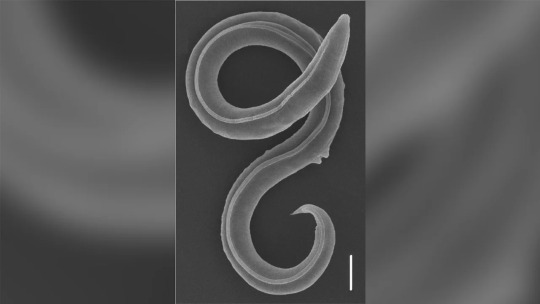
13 notes
·
View notes
Text
WATER BEARS!!!
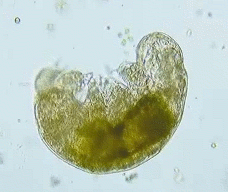

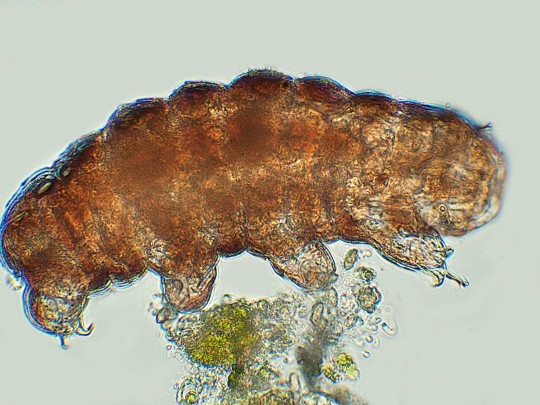
Tardigrades or Water Bears are near microscopic; they can be seen with low power microscopes. These tiny guys grow to about 0.5mm. They are short and stubby with 4 pairs of legs ending with claws or suction cups.
Only being discovered in 1773 by Johann August Ephraim Goeze, there have been fossils of Tardigrades dated back as far as the cretaceous period. They have survived all 5 recognized mass extinctions due to thier super survival characteristics! Scientists have reported Water Bears in hot springs in the Himalayas to the deep sea and under layers of solid ice. Tardigrades are one of the few species that can lower their metabolism to less than 0.01% of normal and can drop thier water content to 1% of normal. During this state, called cryptobiosis, they can go without food or water for 30 years; later, they can rehydrate forage and reproduce like normal! They also enter this state of "hibernation" through anhydrobiosis which allows them to survive inhospitable environments as well as unnatural extremes such as subzero temperatures or even Outer Space!!
See Octonauts, "The Water Bears"(season 3, episode 2)
9 notes
·
View notes
Text
A couple of my longstanding headcanons for The Host. I'm curious what y'all in the fandom think:
"The Seeker" is the Seeker's actual name. Not sure if this one is already common consensus or not, but Souls seem to usually take names based on their experiences, and this is the Seeker's first world. She doesn't have many of those experiences to reference, and it probably feels awkward to reference those of her mother. She could take the name of her host, but she's terrified of humans and of losing herself to her host. So what does she have? Her whole existence has been Seeking. She is the Seeker. No one else ever uses any other name for her because she has no other name.
The world of the See-Weeds orbits Proxima Centauri. I always felt like this was the intended implication. It's stated to be approximately a decade's round trip. If we're assuming that Soul ships travel at or near the speed of light, that means it's about 5 light years away. (I realize that relativity probably makes this funky, but I don't think that Meyer was considering that when she wrote it, so neither will I. Besides, if superluminal travel is in play, then it's probably assumed that they have a way around that.) Proxima Centauri is a little over four light years away, and the barycenter of the Alpha Centauri system is a bit further. Now, if we're assuming they're traveling at subluminal but extremely hyperrelativistic speeds, then the math just about checks out perfectly. In addition, the planet of the See-Weeds is stated to orbit a trinary stellar system. Now, Proxima Centauri wouldn't be meaningfully visible from a planet orbiting Alpha Centauri A or B, but both stars would be noticeably bright from a planet orbiting Proxima.
And, just for fun, a third headcanon I held for a long time, but now concede doesn't really stand up to scrutiny:
3. The Origin is a gas dwarf, probably a mini-Neptune. We know that the Origin is noted for it's colorful cloud bands, which is a phenomenon iconic to gas giants. The original hosts were capable of flight, which would be a necessity on a gaseous planet. We can also infer from the existence of the cryotanks that the Origin is significantly colder than Earth, though that's less clear -- the point of the cold could be cryogenic cryptobiosis.
Still, this isn't especially likely, for the simple reason that Souls themselves are not flight capable. The pressures that would be required to let them swim through the atmosphere would probably necessitate higher temperatures than they're implied to be suited for, as well. It's still conceivable that this could be true if there were floating masses of vegetation in the atmosphere to serve as something like a surface, but it's far more likely the Origin is a terrestrial world, alas.
7 notes
·
View notes
Note
at this point I feel like I should be sending asks back
do you know what cryptobiosis is?? because I discovered it earlier and RAAAAAAHHHHHHH
I do not. Though I’m curious. Please, do tell!
4 notes
·
View notes
Text
nature what the FUCK!?!??!?
THEY JUST SAT THERE FOR 46000 YEARS, ALIVE, AND THEN WENT ON WITH LIFE AS IF NOTHING HAPPENED????
2 notes
·
View notes
Text
Sixth Doctor - Project: Blue Box

TV Stories
◆ The Twin Dilemma
◆ Attack of the Cybermen
◆ Vengeance on Varos
◆ The Mark of the Rani
◆ The Two Doctors
◆ Timelash
◆ Revelation of the Daleks
◆ The Mysterious Planet
◆ Mindwarp
◆ Terror of the Vervoids
◆ The Ultimate Foe

Audio Stories
- 6th Doctor Adventures
◆ The Ratings War
◆ The Maltese Penguin
◆ Real Time
◆ Her Final Flight
◆ Cryptobiosis
◆ Return of the Krotons
◆ Voyage to Venus
◆ Voyage to the New World
◆ Trial of the Valeyard
◆ The End of the Line
◆ The Red House
◆ Stage Fright
◆ The Brink of Death
◆ The Headless Ones
◆ Like
◆ The Vanity Trap
◆ Conflict Theory
◆ One for All
◆ The Murder of Oliver Akkron
◆ Elevation
◆ The Rotting Deep
◆ The Tides of the Moon
◆ Maelstrom
◆ The Mindless Ones
◆ Reverse Engineering
◆ Chronomancer
◆ Broadway Belongs to Mel
◆ Purification
◆ Time-Burst
◆ Girl in a Bubble
◆ The Corruptions
◆ The Wrong Side of History

- Main Range
◆ Davros
◆ Year of the Pig
◆ Whispers of Terror
◆ … ish
◆ The Reaping
◆ Memories of a Tyrant
◆ Emissary of the Daleks
◆ Harry Houdini’s War
◆ Plight of the Pimpernel
◆ Recorded Time and Other Stories
◆ 1963: The Space Race
◆ Breaking Bubbles and Other Stories
◆ Blood on Santa’s Claw and Other Stories
◆ The Wormery
◆ I.D./Urgent Calls
◆ Vampire of the Mind
◆ The Acheron Pulse
◆ The Lure of the Nomad
◆ Iron Bright
◆ Hour of the Cybermen
◆ The Hunting Ground
◆ The Marian Conspiracy - ★★★★★
If anyone is unsuse about how good pure historicals can be, check this out. This is a fun adventure but also charged with this sorrow and melancholy of knowing there is no changing the past; a concept a bit weird for a time travel series but still it’s in these situations that Doctor Who leaves me the most breathless. Add that to the impecable chemistry of the Sixth Doctor and Evelyn Smithe and you have one of the best companion introductions ever.
Complete review: here.
◆ The Spectre of Lanyon Moor - ★★☆☆☆
The first time I listened to this release, I left with a bitter taste in my mouth. It was not the worst thing ever, but extremely average. I had a lot more fun in Lanyon Moor this time around, but I am sad to say my opinion didn’t change all that much. There are good things here - the main characters have stellar chemistry, I love the setting and the premise. But it’s a story that don’t leave much of an impression and, even if not bad, is quite forgetful.
Complete review: here.
◆ The Apocalypse Element - ★★★☆☆
I can acknowledge the good things about The Apocalypse Element as a war epic in a huge scale (Daleks vs Time Lords) but it’s not the kind of story I like, specially because I started Doctor Who in 2020. I feel it would be dishonest to call this a tradicional Dalek story, but if we ignore this is the first time this specific conflict was done - it’s still a tale of a bunch of Daleks trying to invade a planet and destroy the whole universe. What gets to me the most is that I’m not necessarily a hater of traditional stories - I love how Lucie Miller/To the Death builds beautifully upon that with a huge character focus on part one and Masters of Earth is an action epic that is delightful to hear -, but this one I just don’t get. The best thing in my opinion is by far the regulars (the Doctor, Evelyn and Romana), which are great and very well characterized. I think average is too harsh, so consider this one of the good stories I like the least.
Complete review: here.
◆ Bloodtide - ★★★★★
An energetic adventure and full of powerful images. Bloodtide is one of the best Silurians stories and a triumph as a historical. Bringing Darwin and them together is a really clever choice that opens a lot of opportunities to work around biology concepts and ideas within the interspecies relationships. This is also a narrative full of wonder - for Galapagos, for its characters, for all this background it wants to tell. And I go head on in wonder with it, it’s a tale that fascinates me. All of that plus one of the best performances for Six and Evelyn and you have one of my favorite releases of the Sixth Doctor.
Complete review: here.
◆ Project: Twilight
◆ The Sandman
◆ Jubilee
◆ Doctor Who and the Pirates
◆ Medicinal Purposes
◆ Pier Pressure
◆ 100
◆ Assassin in the Limelight
◆ Project: Lazarus
◆ Arrangements for War
◆ The Nowhere Place
◆ The Crimes of Thomas Brewster
◆ The Feast of Axos
◆ Industrial Evolution
◆ Thicker Than Water
◆ The Wrong Doctors
◆ The Holy Terror
◆ Last of the Cybermen
◆ The Condemned
◆ The Doomwood Curse
◆ Brotherhood of the Daleks
◆ The Raincloud Man
◆ Patient Zero
◆ Paper Cuts
◆ Blue Forgotten Planet
◆ City of Spires
◆ The Wreck of the Titan
◆ Legend of the Cybermen
◆ The Curse of Davros
◆ The Fourth Wall
◆ Wirnn Isle
◆ Vortex Ice/Cortex Fire
◆ Antidote to Oblivion
◆ The Brood of Erys
◆ Scavenger
◆ The Widow’s Assassin
◆ Masters of Earth
◆ The Rani Elite
◆ Criss-Cross
◆ Planet of the Rani
◆ Shield of the Jotunn
◆ Order of the Daleks
◆ Colony of Fear
◆ Absolute Power
◆ Quicksilver
◆ The Behemoth
◆ The Middle
◆ Static
◆ Cry of the Vultriss
◆ Scorched Earth
◆ The Lovecraft Invasion
◆ The End of the Beginning
◆ The One Doctor
◆ The Juggernauts
◆ Catch-1782
◆ The Wishing Beast/The Vanity Box
◆ Spaceport Fear
◆ The Seeds of War

- Classic Doctors, New Monsters
◆ Judoon in Chains
◆ The Carrionite Curse
◆ Together in Electric Dreams
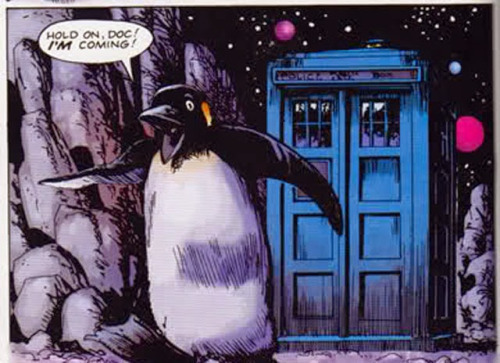
- The Companion Chronicles & Peladon & Stageplays
◆ Peri and the Piscon Paradox
◆ A Town Called Fortune - ★★★☆☆
◆ Night’s Black Agents
◆ The Ultimate Adventure
◆ Beyond the Ultimate Adventure
◆ The Death of Peladon

- The Lost Stories
◆ The Nightmare Fair
◆ Mission to Magnus
◆ Leviathan
◆ The Hollows of Time
◆ Paradise 5
◆ Point of Entry
◆ The Song of Megaptera
◆ The Macra
◆ The Guardians of Prophecy
◆ Power Play
◆ The First Sontarans
◆ The Ultimate Evil
◆ Mind of the Hodiac

- Short Trips
◆ Not Forgotten
◆ The Shadow of Serenity
◆ Primer Winner
◆ Murmurs of Earth
◆ The Authentic Experience
◆ Under ODIN’s Eye
◆ To Cut a Blade of Glass
◆ The Doctor’s Coat
◆ Mission Improbable
◆ These Stolen Hours
◆ The Darkened Earth
◆ The Wings of a Butterfly
◆ Intuition
◆ Mel-evolent
◆ Loud and Proud

Books
◆ State of Change
◆ Time of Your Life
◆ Millenial Rites
◆ Killing Groung
◆ Burning Heart
◆ Business Unusual
◆ Mission: Improbable
◆ Players
◆ Grave Matter
◆ The Quantum Archangel
◆ The Shadow in the Glass
◆ Instruments of Darkness
◆ Place of the Red Sun
◆ Blue Box
◆ Synthespians TM
◆ Spiral Scratch
2 notes
·
View notes
Text
I have discovered something known as cryptobiosis and it is changing my life
4 notes
·
View notes